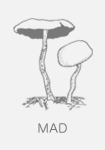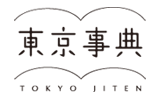Laureana Toledo
1)Introduction
Ever since, along with several other artists, I co-founded SOMA, an artist-run space in Mexico City in 2009, I was told about AIT's project in Tokyo. It struck me how similar our projects, interests and questions were. We started talking back then about an exchange through our residency programs, but it wasn't until 2013 that Julieta Aranda and myself, artists from the committee of SOMA, could travel to spend some time in Japan, and start what will hopefully become a very fruitful relationship. Aside from starting to build these bridges, I was obviously curious about Japan, its culture and its impact on my life, and thus I decided to do a couple of personal projects along with linking our institutions.

2)Projects undertaken in Tokyo
I spent 9 weeks in total in Japan, which gave me time to be in Tokyo, and travel a bit. In my time in Tokyo, I embarked on two personal projects. The first project was to do with going to the public library to look at newspapers from fixed dates, dates on which I had bought Japanese food somewhere in the world. Having saved the receipts, I checked the corresponding newspapers and since I could not understand a thing, I started to describe what I could see in them. This is going to be a book of descriptions, like George Perec's book, 'An Attempt at Exhausting a Place in Paris'.
The other project consisted of walking exhaustively through the streets of Tokyo in order to photograph buildings, which are later used in collages of animated creatures, continuing with a series of similar collages I had done previously in London, but now also influenced by Japanese cartoons and iconography. By walking the streets of Tokyo in this way, I think I got to see many parts that I would not have seen otherwise, because they were some of the most uninteresting streets, ones that would never be contemplated as a tourist attraction. I was fascinated to photograph those streets.

3)Travels throughout Japan
The first trip was with Naoko from AIT, to meet the people from Social Kitchen in Kyoto. On that first encounter, a few people from different backgrounds talked about their experiences in running independent, non-profit cultural spaces. This is when the one weekend discussion and workshop we organised later was planned. I did some more traveling on my own to Nagasaki, Beppu, Naoshima, Hiroshima, Naruto, Nara and Nikko. Needless to say, these travels were more than enlightening, trying to visit many museums, whilst sightseeing and trying to grasp as much as I could from them.

4)Exhibitions and the local art scene
During my time in Japan I went to many exhibitions, both in galleries and museums. I remember very fondly the Edo Tokyo Museum, the Makoto Aida exhibition at Mori Art Museum, as well as many days of intensive gallery hopping. Of those visits, I remember a couple of photography shows, one of travelling blind musicians, and the other of the sketching photographs of Francis Bacon. I had the luck to be in Japan in time for a Francis Alys show opening at MOT, giving me the chance to see a work I know very well in a totally different context. Another good opportunity to see a wider glimpse of Japanese contemporary art was visiting the Tokyo Art Fair, which struck me as a very interesting combination of traditional and contemporary art, and it was a combination of which I had not seen at an art fair before, and it made me understand where many of the techniques and iconography of contemporary art come from.

5)Event: This is a Geography Lesson
This is a Geography Lesson was a two-day event, with a discussion on the viability of non profit art spaces, and how to survive on non-governmental, independent budgets. On the first day, we gathered a group of curators, artists, art journalists and people from AIT to discuss these topics whilst enjoying a set of very delicate Japanese drinks and pastries. The next day, we opened the discussion to more participants, and Julieta and myself cooked a Mexican meal. Excerpts from the discussions on each day were then developed into a printed brochure by AIT, on which I got to work very closely on the content and design.
I also participated in the online talk series Tokyo Jiten. I focused on the word 'covers', which speaks of my impression of Japanese culture through its appropriation of the English language, its barriers to someone like me who can hardly speak the language, and my fascination with being lost.
I also met with artists who were interested in doing a residency at SOMA, from which Masahiro Wada was selected to visit Mexico in May. I was particularly interested in the work of Masahiro Wada because it struck me as being very different. The other works I had seen were closer to international trends in many ways, but I could not really pinpoint Wada's work. In his time in Mexico, Wada lived the typical Mexican experience of being sick and without electricity for a few days. It was his experience of fever fuelled delirium that became the basis for his work.

6)Summary
In seeing how Wada reacted to his stay in Mexico, I realised what I had lived myself in Japan: how utterly different our cultures are, and how enriching our visits had been. This gave me confidence that the exchange between our institutions needs to be encouraged further. I will try to push the funding for the visits for 2014, of a Mexican artist to Japan and vice-versa, as well as research trips for curators of both countries to visit artist studios. I really hope I can visit Japan again soon to finish the newspaper research I started, in order to complete my book, and to perhaps have it illustrated by a few Japanese artists.

Back to Agency of Cultural Affairs









